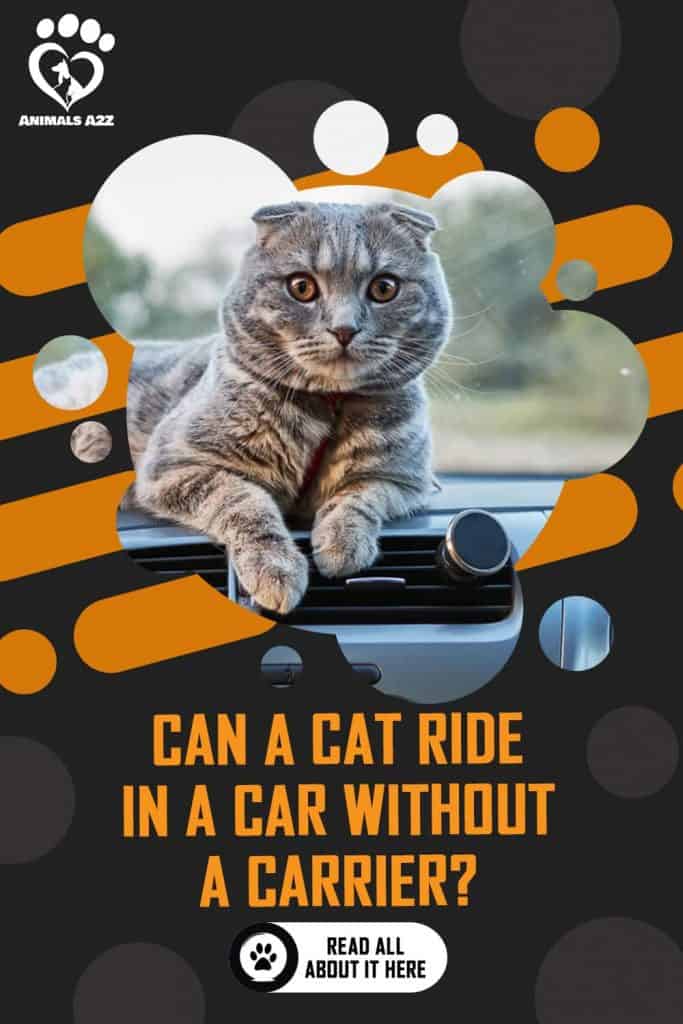It’s legal, most states require that your cat has to be restrained when riding a car as they can easily get frightened and may potentially distract the driver. It’s totally okay for a cat to ride in a vehicle without a carrier but there are some conditions you need to follow.
Most states also have varying laws on how a cat should be restrained while riding a car to avoid any accident related to unattended pets inside the car.
Table of Contents
Reasons why it’s important to restrain your cat in a car
Not all cats enjoy traveling, but if your cat does, you still need to make sure that he’s properly restrained while in the car to avoid any road accidents related to distracted driving.
If you just let your cat sit on your lap while you’re driving, there’s a huge possibility that you, the other passengers, and your cat will get hurt. So, the next time you’re planning to take your cat with you on a road trip, then make sure he’s restrained well.
There are some states that charge pet owners with animal cruelty if their pets are severely hurt during a vehicular accident. If that happens, you can be fined or imprisoned depending on the state where the accident took place.
That’s why as much as possible, experts suggest that you use a cat carrier when you really have to take your cat with you on a road trip. We will be sharing some tips below on how to keep your cat calm, safe, and stress-free during your car travel.
Whenever someone rides your car, you always want that person to buckle up for his or her safety and you should also do the same for your cat. Whenever you have to take your cat to the vet or just for a quick trip on the road, make sure that he’s properly restrained so his life will also be protected.
Just like your friends and family members, your pet’s life also matters and the last thing you want to happen is to lose him in a vehicular accident because of your negligence.
When you say properly restrained, it means that your cat should be leashed properly or placed in a carrier during your travel to keep him safe and secure. Properly restraining your cat in a car means that in case a vehicular accident will take place, your cat will be protected, including you and your passengers because a frightened cat can also harm humans.
Cats are not used to travel far from home and they don’t even prefer to leave their territorial place so it’s not impossible for your cat to act rude during his ride in your car. Properly restraining your cat, including other pets, when you drive will also keep you safe as a driver because if your cat is afraid, he may instantly jump on your lap which can startle and distract you while driving.
Common questions about your cat riding in a car without a carrier
What can I use instead of a cat carrier?
If you don’t have a cat crate or carrier or don’t feel like using one, then you can use other pet restraining methods when your furry feline has to ride in your car. You can use a harness since most felines respond well to harnesses and leashes, or if you have an adult cat, you can try using a cat bed as it can make your cat more relax and calmer during the trip.
What is the best method to transport a cat via a car?
While you can try other cat restraining methods when your cat is riding a car, experts still suggest that you use a cat crate or carrier as it can make your cat feel stress-free during the travel and you’ll have better peace of mind as well. If you have a cat carrier, your cat can freely stand, sit, walk around and lie down so consider this the next time your cat has to ride in your car.
Can I let my cat free in the car?
Once you have already placed your cat in the carrier, don’t let your cat out in your car while you’re driving. If your cat is loose inside the car, he can easily get stuck somewhere like under the seats or in the trunk. This will cause you more worries and you and your cat’s lives will be in danger. If your windows are open, your cat could also jump outside, putting his life at risk.
Conclusion
Cats don’t like traveling a lot so there’s a huge possibility that when he rides in your car, he might easily get frightened and stressed out, leading to unruly behavior like scratching, jumping, and loud meowing that can distract you as a driver. This is why most states require that your cat has to be properly restrained or kept in a crate or carrier while traveling to ensure the safety of everyone on the road.


